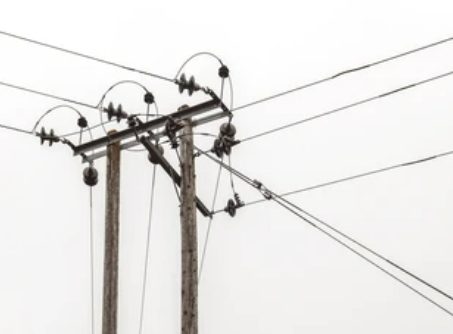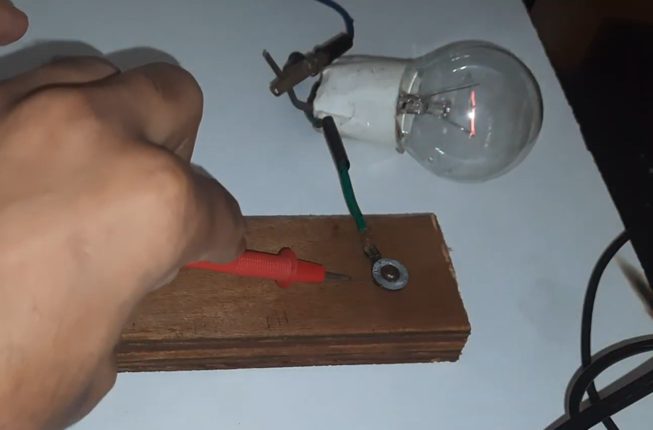Can Electricity Travel Through Wood? (Guide)

Hey everyone! Over the years, I’ve tackled countless projects involving all sorts of materials, and let me tell you, I’ve picked up some pretty interesting insights along the way.
One question that seems to pop up now and then is: Can electricity travel through wood? It’s a great question, especially considering how often wood and electrical work cross paths in home building and DIY projects.
Generally, wood is an insulator and does not conduct electricity. However, electrical current may flow inside the material depending on different factors (i.e., temperature, thickness, moisture).
So, whether you’re a seasoned pro or just starting out with DIY projects, understanding the relationship between wood and electricity is crucial. Let’s get into it and unravel the mysteries of wood’s conductive properties!
Wood and Electricity: What’s the Real Deal?

In all my years on the job, I’ve seen a lot of misconceptions about wood and electricity. Let’s set the record straight: wood is generally an insulator.
What does this mean in the real world? It’s all about how wood is built. Wood comprises cellulose fibers and lignin, which are packed tightly together.
This structure doesn’t leave much room for electricity to move around. It’s like trying to push through a packed crowd – not much room to maneuver. That’s why we often use wood for power line poles. It’s a natural insulator, keeping the current where it belongs and people safe.
But here’s where it gets interesting – add water to the equation, and things change. I’ve seen this firsthand during outdoor projects in damp conditions.
When wood absorbs water, it starts to conduct electricity. It’s not the wood doing the conducting; it’s the water inside. Water, as we know, is a pretty good conductor.
So, when wood is wet, electricity can pass through it, so it’s risky to mess with wooden structures near power lines when it’s raining.
So, always remember, dry wood is your friend when it comes to insulation, but throw in some water, and you’ve got to be on guard.
Turning Wood into a Conductor: My Observations from the Field

In my years of working with various materials, I’ve picked up some interesting insights on how wood, typically an insulator, can turn into a conductor. It’s all about tweaking a few key factors.
- Temperature: Like how heat affects materials differently, wood is no exception. I’ve noticed that extreme temperatures can alter its insulating properties. A good example is when wood gets hot, its ability to conduct electricity changes.
- Moisture: This one is crucial. The amount and type of water in wood can turn the tables. It’s not just about the wood getting wet; it’s about how soaked it is and the minerals in the water. Remember when we had to delay that outdoor project because of the heavy rain? Wet wood can become a sneaky conductor.
- Wood Species: Different types of wood react differently. Some species, especially those with tightly packed fibers, are less likely to conduct electricity. I’ve seen this while working with various wood types – each has unique properties.
- Thickness: The thinner the wood, the less it acts like an insulator. I learned this the hard way during a project where we used thin wooden panels – they were more conductive than we expected!
- Impurities and Additions: If wood is mixed with or coated in conductive materials, like metal, it can start acting like a conductor. I’ve seen some interesting art pieces where this principle was used creatively.
- Voltage: High voltage changes the game. A striking example is lightning hitting a tree. The intense voltage makes the moisture in the tree boil, leading to some dramatic effects. It’s a reminder of the power of nature and the potential of materials like wood.
Through all these experiences, I’ve learned that wood is a complex material. Various factors can influence its conductive properties, making it a fascinating material, especially in outdoor and mixed-material projects.
Staying Safe Around Wood and Electricity: My Go-To Tips
Safety is always my top priority when working on projects, especially when it involves electricity and wood. Here are some essential safety tips I always follow:
- Keep it Dry: I always check that the wood I work with is completely dry. Moisture is a big no-no when it comes to electrical safety. Remember that project we did in the rainy season? We had to be extra vigilant to keep everything dry.
- Watch for Water Sources: I make it a point to ensure no water sources are nearby when working with wood and electricity. Water can be sneaky, and you don’t want it near your electrical work.
- Electricity and Water Don’t Mix: This is a golden rule I’ve always stuck to. Mixing electricity and water can lead to serious hazards. It’s like that time we had to reroute some wiring in a kitchen remodel to keep it away from the sink and dishwasher.
- Wear the Right Gear: I never skimp on safety gear. Anti-electric gloves are a must-have. They’re like your first line of defense against electrical shocks.
- Install a GFCI: This is a game-changer. Installing a Ground Fault Circuit Interrupter (GFCI) can prevent accidents. It’s a simple addition, but it adds a huge layer of safety, especially in areas prone to moisture.
Following these tips has kept me and my crew safe on countless jobs. It’s all about respecting the power of electricity and understanding the properties of the materials you’re working with.
Comparative Analysis of Electrical Conductivity: Wood vs. Other Common Materials
When tackling any project, whether a home renovation or a simple DIY task, understanding the properties of the materials you’re working with is crucial.
So, let’s dive into a comparative analysis where we’ll look at how wood, a common material in many of our projects, stands in terms of electrical conductivity compared to other materials we frequently encounter.
| Material | Conductivity | Notes |
|---|---|---|
| Wood | Poor Conductor | In my projects, I’ve found wood to be a reliable insulator. Even when working with wet lumber, the risk of conduction is minimal compared to metals. |
| Copper | Excellent Conductor | I often use copper for wiring because of its superb conductivity. Remember that renovation where we ran copper wires throughout? It’s the go-to for electrical systems. |
| Glass | Very Poor Conductor | Glass is another great insulator. I’ve used it in window installations and never had issues with conductivity, even in stormy weather. |
| Aluminum | Good Conductor | Aluminum, while not as conductive as copper, is still widely used in wiring. It is light and less expensive, but I always take extra precautions during installation. |
| Rubber | Very Poor Conductor | Essential for safety gloves and insulating materials. I’ve used rubber grips on tools for extra safety against electrical shocks. |
| Water (Pure) | Poor Conductor | Pure water is surprisingly a poor conductor, but once impurities are in, it changes. I recall a project where we had to be careful with outdoor wiring due to rainwater. |
| Steel | Moderate Conductor | It is used in some electrical applications but is less efficient than copper. In building construction, its conductivity is a consideration for grounding. |
In my experience, understanding the conductivity of different materials is crucial in both home improvement and safety. From electrical wiring to choosing the right materials for a project, these differences play a big role in my decisions on the job.
References
Books:
- “Wood Handbook: Wood as an Engineering Material” by Forest Products Laboratory, U.S. Department of Agriculture. https://books.google.com/books/about/Wood_Handbook.html?id=LYAWAAAAYAAJ
- “The Art of Electronics” by Paul Horowitz and Winfield Hill. https://artofelectronics.net/
Organizations:
- Forest Products Laboratory (FPL). https://www.fs.usda.gov/
- Institute of Electrical and Electronics Engineers (IEEE). https://www.ieee.org/
Website Resources:
- Wood Database. http://wood-database.com/
- ScienceDirect. http://www.sciencedirect.com/
Video References:
Techs Science
